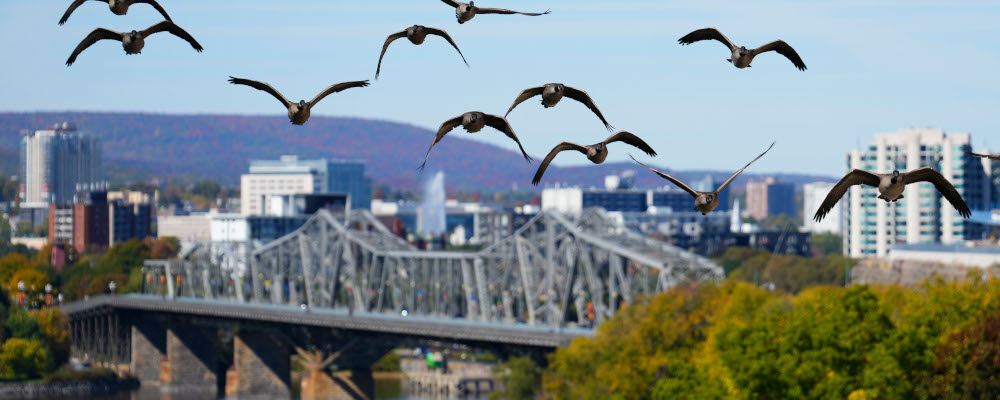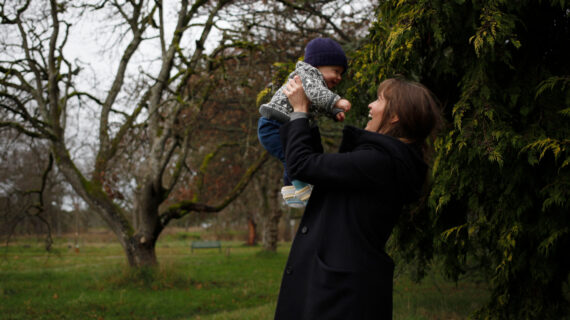On October 24th, Ontario residents will head to the polls to elect their municipal governments. As per usual, it is likely that very little will change. As a 2020 article in the Journal for Canadian Politics quantifiably demonstrated, incumbents in Ontario municipal elections have “an almost insurmountable advantage”.
This is hardly surprising. Elections, which are fought over defining the elusive “ballot-box question”, rarely get an interesting question in Ontario municipal politics. More often than not the question boils down to: “which name do you recognize the most?”
Because of this, municipal elections without incumbents represent unique opportunities to see a real debate over vision.
Or they should be.
We’re having one such election in our nation’s capital right now.
In December of last year, long-time Mayor Jim Watson announced his retirement.1For those that don’t know much about local Ottawa politics, long-time Mayor Watson governed the city for three consecutive terms (not counting his earlier stint in the 90s). While his legacy will be debated, given ongoing issues with Ottawa’s seemingly cursed LRT system, one cannot critique Watson’s commitment to the city. The proverbial “Ottawa Man”, Mayor Watson will always be remembered for his deep love of the city and for showing up at every single possible event, big or small. A colleague once joked to me that Jim would attend the opening of an envelope if he was invited.
We might jest, but the truth is that politicians with that level of commitment who devote their entire lives to their job should be commended for their service. I wish Mayor Watson a happy retirement.
His departure leaves a vacuum, one that 14 candidates are trying to fill.
This election should be, then, a real debate between Left and Right over what the future of our city will look like. If polling is to be believed, the Left is doing a much better job defining the choice.
Three candidates are mounting competitive campaigns: City Councillor Catherine McKenney, former Mayor, Regional Chair & MPP Bob Chiarelli, and businessman/media personality Mark Sutcliffe.
Lacking traditional political parties, Ottawa’s municipal politics has largely followed a centre-right vs. centre-left trajectory. Throughout his terms in office, Mayor Watson (a partisan Liberal) has relied on a coalition of Liberal & Conservative supporters to stay in power and prevent a left-wing candidate from taking office. A small resistance of left-wing councillors has formed his opposition. In this race, Councillor McKenney is their banner carrier.
Both Chiarelli and Sutcliffe are competing for the centre-right coalition. Councillor McKenney is attempting to capture the winds of change and is presenting a clear left-wing vision for Ottawa. For example, the Councillor has pitched a mammoth investment in expanding cycling around the city. With all due respect to our cyclists, I cannot fathom the need for a $250 million investment in cycling in the world’s second coldest capital and one of Canada’s geographically largest cities.
A recent Mainstreet poll has McKenney leading with 34 percent, with both centre-right competitors trailing substantially.
To overcome these poor polls, it is incumbent on the centre-right campaigns to consider a bolder move to capture voters’ imaginations. In an election with change winds blowing, it is not enough to campaign on the status quo and disparate policy proposals. We need to see a more inspiring vision.
Off the top of my head, here are seven questions that demand vision:
- Given our vast geography, how can we effectively (I’ll repeat, effectively…) get people to and from work/school and allow tourists to move around the city when visiting?
- If more workers are going to work from home, what will our downtown core—which was largely designed with a large, in-person bureaucratic workforce in mind—look like going forward?
- How do we meet the housing needs of our millennial generation? We are 1.5 million units short in Ontario. Representing 1/15 of the population, this means we need to strategically build at least 100,000 units in Ottawa.
- How do we leverage the colossal infrastructure investment that the Ontario government is making into our new hospital for maximum benefit to our city?
- With the redevelopment of the Parliamentary precinct underway, how do we ensure that the final product contributes to a uniquely “Ottawa” downtown core that will attract visitors to our city?
- As we seek to attract new workers to our city, how do we ensure that our redevelopment of LeBreton flats (a barren piece of unused land on the doorsteps of downtown) and Lansdowne Park (home of our football and OHL hockey) serve as economic drivers for our community that make Ottawa fun to live in?
- How do we ensure that our tech industry continues to grow, balancing out an otherwise public-service heavy labour force?
While the Left will answer these questions with a mixture of bicycles, raised taxes, and NIMBYism, we need a clear articulation of a centre-right vision. Moreover, all of these questions have to be considered in the larger context of diminished public finances. Ottawa currently has a $3.5 billion deficit and burgeoning debt. Doing more with less should make this a challenge uniquely suited to the Right.
Many of these questions actually help to answer each other. Questions on housing, transit, and tourism, for example, are all intractably linked. Ottawa’s Zibi development, an environmentally sustainable community being built close to new transit and entertainment investments, shows a unique model that should be further explored.2 Zibi is seeking to create a fun, vibrant, and hip new community that will attract newcomers to Ottawa’s (sometimes) quiet downtown. The entrepreneurs involved in the project have a clear vision and are trying to create a buzz around the community with zip-lining and in-residence entertainment provided by Cirque du Soleil. They aren’t relying on government funding, but I have no doubt that the myriad municipal development rules have impacted their progress. How can Ottawa help pave the way for future developments like this around other sites that we think will make Ottawa an attractive place for workers to settle? Perhaps this will mean reimagining our downtown core if work arrangements continue to evolve.
With growing deficits and debt, the city will undoubtedly go to other levels of government for financial assistance. Unfortunately for Ottawa, facing their own pressures the other levels will likely start throttling their own spending. As such, the city should look to where the other levels are already spending money, like the new Civic Hospital. This project is the second largest provincial infrastructure investment in Ontario’s history.3The project will include a new hospital, three new research towers, and a renovation to the old facility to turn it into long-term care and alternative-level care beds.
Following its construction, Carling Avenue will look similar to Toronto’s University Avenue, a corridor of health and scientific research and practice. A smart vision for our city would ask how this investment could best be leveraged. For example, how can we connect the new health research facilities with our innovative tech sector in the west end? Can we use it to attract new biotech entrepreneurs? What could the city do to cement this potential linkage?
Moreover, on our own budget, we should be looking to technology and private sector methods of impact evaluation, like Key Performance Indicators (KPIs).4Technology is making it easier to track these KPIs. Unlike the multi-billion-dollar budgets of provinces or the federal government, which are harder to track, Ottawa could become a leader in evaluating its spending and outcomes in a transparent way. Want to launch a neighbourhood pilot program to combat youth homelessness? Fantastic. How will we evaluate its success? If it isn’t performing as expected, let’s take those scarce funds and invest them elsewhere in a program that is performing well, or use them to pay off our debt.
These are just a few ideas of where we could look in answering these larger questions. It is in no way a comprehensive list. But in developing a vision and a ballot box question, they might offer a chance at presenting on a bold vision that Ottawa residents can get behind on October 24th and offer a pro-growth alternative to the Left.
Both the Chiarelli and Sutcliffe campaigns have shown hints of vision. Chiarelli’s focus on getting the basics right and Sutcliffe’s recent commitments on housing are laudable. But we need more. Vision is about more than putting out a slew of proposals. It’s about articulating the stakes for the future and painting a picture of what it will look like. It’s the poetry of campaigning, as opposed to the prose of governing.
Inspire us.
I love Ottawa. Derided the country-over as a quiet, bureaucratic backwater, I think we are so much more. We are a city with an enormous heart, whose people choose compassion over derision & apathy whenever given the chance. We learned from the best, with community titans like Max Keeping and Rabbi Bulka teaching us about kindness and public service. We are a city that combines the best of urban metropolises—dining, shopping, business, and architecture—with the best of rural life, exemplified in our dynamic farming communities, rural fairs, and fabulous nature on our doorsteps. We have proven our ability to cherish our history and heritage while pushing the boundaries of innovation and technology. We are a city that, with strong leadership, can continue to push to be among the great national capitals of the world.
This election let’s talk seriously about how we get there.




